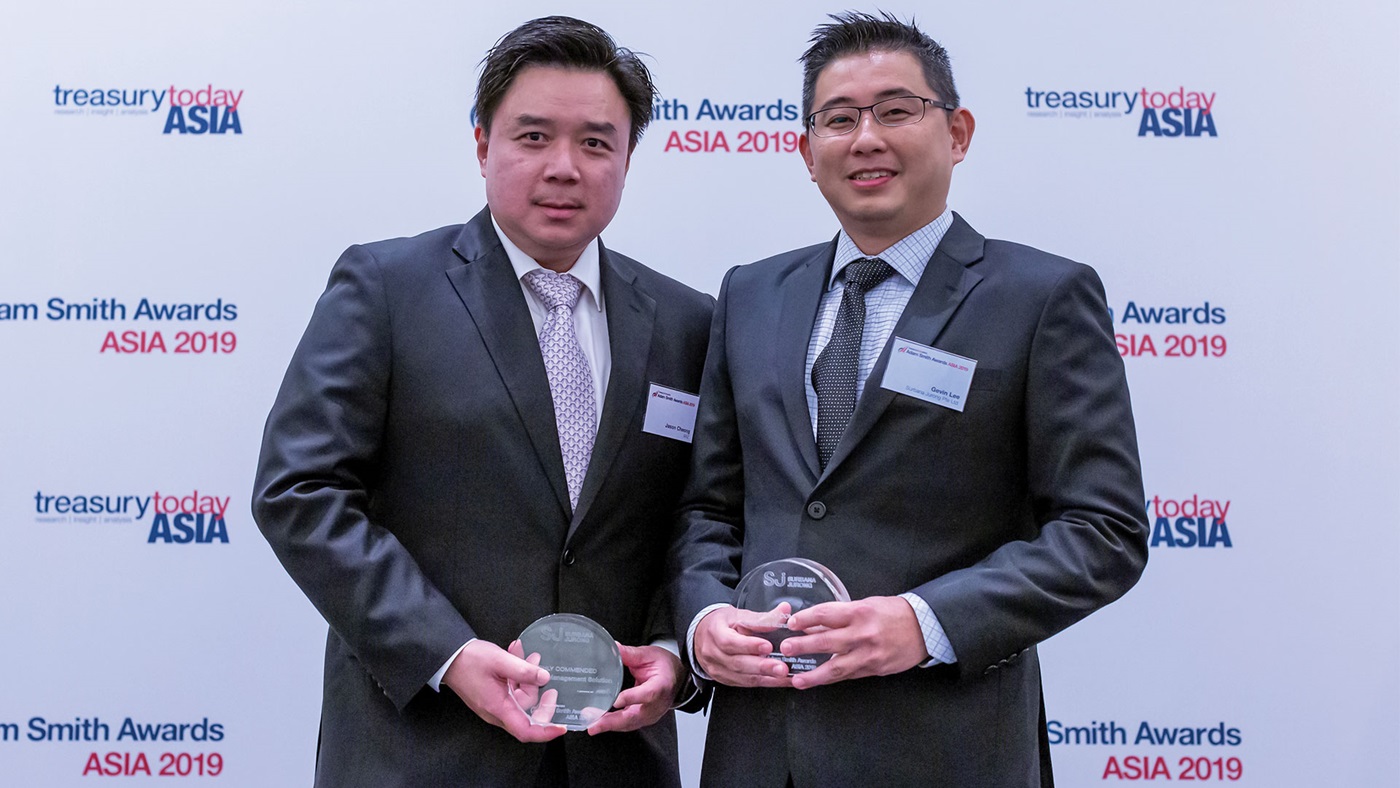
Photo of Jason Cheong, ANZ and Gevin Lee, Surbana Jurong Pte Ltd.
Gevin Lee
Director, Group Treasury

Singapore
Surbana Jurong Group is one of the largest Asia-based urban, infrastructure and management services consulting firms, with close to 70 years of track record in successful project delivery. Headquartered in Singapore, Surbana Jurong was formed in June 2015 through the merger of Surbana International, the building and development arm of Singapore’s Housing Development Board (HDB) and Jurong International, the technical services arm of Singapore’s JTC Corporation. Today, the Surbana Jurong Group of companies comprises SMEC and Robert Bird Group in Australia, Sino Sun in China, AETOS, KTP and SAA Architects in Singapore, and B+H Architects in Canada.
in partnership with

The challenge
Based in Singapore, Surbana Jurong (SJ) is a multidisciplinary urban infrastructure and management services consultancy firm with a successful track record in project delivery. In recent years it has been rapidly expanding its urban and infrastructure capabilities and extending its geographical reach through organic growth, acquisitions and partnerships.
In tandem with these acquisitions came the growth in scale of its operations across multiple countries. As a result, SJ looked to revamp its group treasury functions to improve its financial control over its many subsidiaries, as well as streamline its operations for better synergies and operating efficiencies from a treasury management perspective.
The solution
The starting point of the journey was to examine SJ’s operations across Asia Pacific and derive the key areas of focus in order to meet the core objectives, which were:
- Gaining an oversight of its financial operations across the region whilst allowing SJ to access real-time information and liquidity positions.
- The ability to leverage group surplus funds to address funding gaps and consolidate 74 accounts across 16 banks.
- Through a single uniform system and integration with the treasury platform, SJ was able to enhance yield on cash that was distributed among multiple bank accounts and countries.
As SJ is a truly diversified infrastructure company, the bank had to adopt an analytical approach to meet its key imperatives. This required a thorough understanding and a deep knowledge of its existing operating framework whilst carrying out minimal disruption.
Combined with a deep understanding of Asia, SJ was able to execute and implement the solution and accelerate the time-to-market. As such, SJ now reaps the benefits of improved yields on cash and optimised liquidity and cash management solutions.
With robust expansion plans, SJ has now established the building blocks and framework which will allow ease of integration for new acquisitions in Asia and through organic growth. The timely adoption of this rationalisation and optimisation exercise allowed SJ to further its business opportunities and focus on its core competencies with a long-term outlook.
Best practice and innovation
In addressing SJ’s stated goals, there was a concerted effort to minimise disruption to its existing operations. The rationalisation exercise struck a good balance, as the purpose of streamlining operations and process efficiencies naturally allowed SJ to benefit from the stated objectives of oversight, access and optimised internal liquidity. This further allowed SJ to manage risks, cost of funding and maximise returns on idle balances which existed as pockets of funds across multiple banks in multiple accounts.
Key benefits
- Streamlines and anchored with core operating banks by removing redundant and dormant accounts which were costly from an operational efficiency and returns perspective.
- The bank’s receivables and payables solutions would only require a single account per currency and for each entity.
- Centralised cash visibility and control through consolidation across multiple operating accounts and currency operations.
- Real-time access to operating accounts via electronic banking.
- Automated interest allocation to enhance yields and efficiency.
- Autonomy and transparency across all the operating entities.
- Eliminated trapped liquidity and manual activities to release resources to other value adding activities.